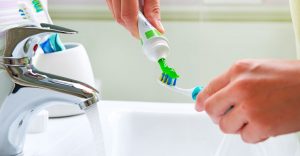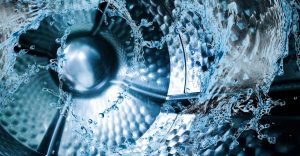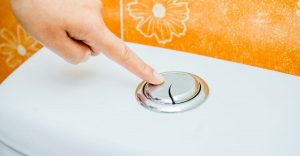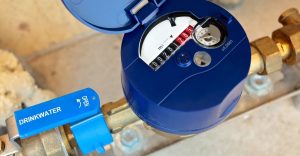Water is not only essential to life, but it’s also fairly expensive to maintain in the home environment. Many people take water for granted and don’t think about conserving this precious resource until their water bill arrives.

However, there are many ways to conserve water in the home without making any major changes. Here are ten best ways to save water at home:
Table of Contents
1. Turn off the faucet while brushing your teeth
 The average person brushes their teeth for 2 minutes, and while this is a good practice for oral hygiene, it also wastes a lot of water.
The average person brushes their teeth for 2 minutes, and while this is a good practice for oral hygiene, it also wastes a lot of water.
Turning off the faucet while brushing can save up to 4 gallons of water per day.
2. Use your washing machine when you have a full load
 It might seem trivial but running the washing machine for one load every day actually wastes thousands of gallons of water a year.
It might seem trivial but running the washing machine for one load every day actually wastes thousands of gallons of water a year.
It’s smart to only run the washing machine when you have a full load. This practice can apply for dishwasher machines as well.
3. Install a dual flush conversation kit on your toilet
 Dual flush toilets have been popular for years in Europe, but they are becoming more prevalent in the US.
Dual flush toilets have been popular for years in Europe, but they are becoming more prevalent in the US.
Dual flush toilets work by having two buttons on top of the toilet tank – one for solid waste and one for liquid waste.
This reduces the amount of water used to flush both types of waste.
4. Check your plumbing fixtures for leaks
 Leaks can waste gallons of water every day, so it’s important to check your plumbing fixtures for leaks on a regular basis.
Leaks can waste gallons of water every day, so it’s important to check your plumbing fixtures for leaks on a regular basis.
One way to do this is to simply take apart the fixture and check for cracks or other damage.
Over time the rubber sealants around fixtures tend to degrade and can cause leaks, so it will be worth your while to replace them annually before they start causing unwanted leaks.
5. Take shorter showers
 The average American takes an 8 minute shower, which wastes up to 2 gallons of water per minute. Try taking a 5 minute shower to save 10 gallons of water.
The average American takes an 8 minute shower, which wastes up to 2 gallons of water per minute. Try taking a 5 minute shower to save 10 gallons of water.
You can also install a low flow shower head to further reduce your water consumption.
A low flow shower head only uses 1.49 gallons of water per minute, so shortening your shower time can still be a win-win situation.
6. Don’t water your lawn during peak hours
 Watering your lawn during the day is a waste of water because most of the water will evaporate before it has a chance to soak into the ground.
Watering your lawn during the day is a waste of water because most of the water will evaporate before it has a chance to soak into the ground.
Try watering your lawn during the early morning or evening hours when the sun isn’t as strong.
7. Installing a rain barrel for outdoor watering
 If you have plants or a garden that need to be watered, consider installing a rain barrel to collect rainwater.
If you have plants or a garden that need to be watered, consider installing a rain barrel to collect rainwater.
This collected water can be used to water plants and gardens, and it’s a great way to conserve water.
It is advisable to use the collected water on the plants and gardens within 36-48 hours to avoid any bacterial growth.
8. Plant a rain garden
 A rain garden is a great way to capture storm water runoff from roofs and streets.
A rain garden is a great way to capture storm water runoff from roofs and streets.
Not only does this help conserve water, but it also serves as a natural garden for local wildlife.
This is a great option for homeowners who live in urban areas where rain barrels are not an option.
9. Monitor your water consumption on your water bill
 Water meters are installed in most homes for this exact reason – to measure your water usage so you can monitor it and make changes accordingly.
Water meters are installed in most homes for this exact reason – to measure your water usage so you can monitor it and make changes accordingly.
This is a great way to monitor your water consumption, and it also gives you the ability to know exactly how much water your household is using each month.
10. Share your knowledge with neighbors
 Water conservation is a community effort, and by sharing your knowledge with friends and neighbors you are setting an example for others.
Water conservation is a community effort, and by sharing your knowledge with friends and neighbors you are setting an example for others.
Not only will they appreciate the information, but you are also setting up your neighborhood for future water conservation successes.
I trust these tips will help you conserve water in your home and lead to a more sustainable future.
